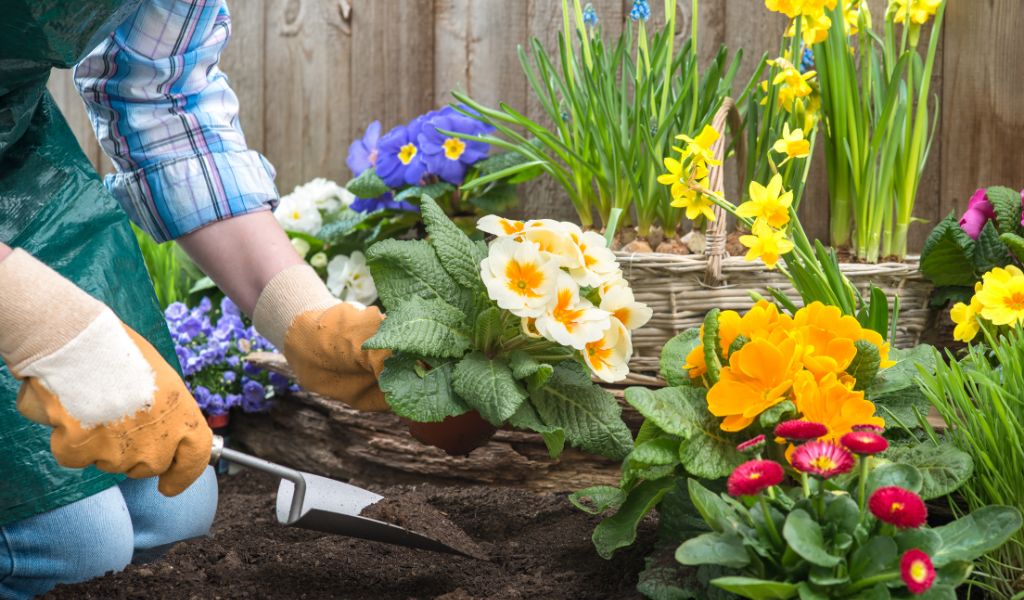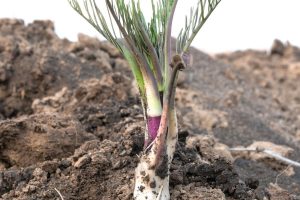Moving garden plants can be a tricky endeavor. It involves understanding the right time to move them, preparing both the soil and new location, as well as having the necessary tools and knowledge on how to properly transplant your plants.
Not only that, but there are also common mistakes people make when attempting to move their garden plants which can lead to failed attempts or worse – dead plants!
In this blog post, we will cover all of these topics so you can have success in moving your garden plants without any hassle.
We’ll discuss what factors affect when is best for planting, tips for successful transplanting of your garden plants, how to prepare both the soil and new location before moving them as well as aftercare for newly transplanted items.
Finally we’ll talk about some common mistakes made when carrying out this task.
Understanding the best time to move garden plants
Generally speaking, fall or early spring are optimal times as the weather is more mild and the temperatures are not too hot nor too cold.
However, depending on where you live, you may find that mid-summer is a good time as well, since the warmth can help the plants to become established before the onset of colder weather conditions.
When preparing for transplanting, it’s important to remember that plants need nourishment and moisture both before and after moving them so make sure you have a plan in place for this.

Factors that affect when you should move garden plants
There are several factors that can affect when you should move garden plants.
These include:
Climate: Different plants have different climate requirements, and it’s important to consider the climate in your new location before moving your plants.
Some plants may not survive in a new location if the climate is too different from their current location.
Season: The time of year can also affect when you should move your plants. It’s generally best to move plants when they are dormant, which is typically in the fall or winter.
This allows the plants time to adjust to their new location before the growing season begins.
Size: The size of the plant can also impact when you should move it. Larger plants can be more difficult to move, and it may be easier to wait until they are dormant to move them.
Smaller plants can be moved more easily, but they may need extra care to ensure they survive the move.
Health: It’s also important to consider the health of the plant before moving it. If the plant is not in good health, it may be more sensitive to the stress of being moved and may not survive the move.
In general, it’s best to plan ahead and consider all of these factors before moving your garden plants.
Tips for successful transplanting of your garden plants
Transplanting garden plants can be a bit of a challenge, but with the right preparation and care, you can successfully move your plants to a new location.
Here are some tips to help ensure success:
Choose the right time: It’s generally best to transplant plants when they are dormant, which is typically in the fall or winter.
This allows the plants time to adjust to their new location before the growing season begins.
Choose the right location: Make sure to choose a location for your transplanted plants that has the same light, soil, and moisture requirements as their current location.
Prep the new location: Before transplanting your plants, prepare the new location by loosening the soil and adding compost or other organic matter to help the plants establish themselves.

Water the plants well before transplanting: Water your plants thoroughly a few hours before transplanting to help them withstand the stress of being moved.
Handle the plants carefully: When transplanting, be gentle with the plants and try to minimize root disturbance. Carefully dig up the plants, keeping as much of the root ball intact as possible.
Water the plants well after transplanting: After transplanting, water the plants thoroughly to help them establish themselves in their new location.
When preparing both the old and new location for transplanting, it’s important to take into consideration factors such as soil type, drainage, sun exposure, access to water and any other environmental conditions that may affect the health of your plants.
Finally, when it comes to the aftercare for newly transplanted items be sure to water regularly and provide adequate sunlight exposure as needed.
Additionally, pruning off any dead or damaged foliage can help encourage new growth and establish a healthy root system.
At a glance – Moving your plants ?
Get the timing right – fall and winter are often the best times
Prepare the destination – light, drainage and the Ph of the soil are critical
Move the plant quickly but with care to avoid damage
Plant firmly and water well
Prune back larger plants to help them to develop strong roots
Provide shelter from hot sun, winds and adverse weather
How to prepare your soil and new location before moving garden plants
Preparation starts with your soil you should make sure you check the pH levels and drainage capacity of the new area as these can be drastically different from what your plant is used to.
Next, look into the amount of light available in your new spot.
This can heavily influence which plants will do well there so take time to observe conditions like nearby trees or buildings that may cast shade during certain parts of day.
When transporting plants, use a larger container than what it is currently planted in for added stability and space for the root system to expand.
Hydrate your plants thoroughly before and after moving them to minimize shock and help them adjust and, if needed, spread mulch around their base after settling them in their new spot or cover lightly with soil until they become acclimated.
What tools are needed to successfully move garden plants
Moving garden plants can be tricky, as it’s important to select the proper tools depending on the type of plants being moved.
Large shrubs and trees usually require heavier duty tools such as a shovel or root saw and, in some cases, you may need special lifting equipment if the plant is particularly large.
For smaller plants or flowers, a hand trowel or even your hands are adequate for digging new homes for your plants.
If transplanting delicate seedlings or annuals, you will likely want to use a bulb planter for easier removal and transport to their new location.
Have plenty of potting soil on hand in case of any backfilling necessary.
Finally, don’t forget the watering can – hydration is key to successful establishment of newly transplanted items.
Aftercare for newly transplanted garden plants
Aftercare for newly transplanted garden plants is essential to ensure their long term health, as failure to do so can lead to their rapid decline.
Regular watering and weeding are key, as well as avoiding overwatering or stressing the soil with rich fertilizers.
Avoiding direct sunlight and slight shading of the plants will also help preventing wilting, especially during heat waves.
Placing a layer of compost or shredded leaves in the topsoil will help retain moisture, enriching the soil with nutrients at the same time.
Checking for pests and diseases is also important and an action should be taken if any signs are seen.
Common mistakes made when moving garden plants
One of the most common mistakes made when moving garden plants is failing to acclimatise them properly.
Make sure to prepare the new soil and environment beforehand, so that they can adjust easily.
Bare rooted plants should be kept moist during transport, while plants in containers should be handled with care to avoid damage to their root systems when they are removed from the pot.
Another mistake is overwatering or overfertilizing, which can damage plants and can quickly lead to their demise.
Transplant shock is also a common issue when moving garden plants so make sure to give them an adequate amount of time for acclimation before expecting growth.
Final Words
Moving garden plants can be a daunting task, but with proper research and preparation it can be done successfully.
Make sure to check the requirements of each individual plant before attempting to move them and follow necessary steps for their acclimation.
With adequate aftercare and attention they can be happy and healthy in their new homes.















